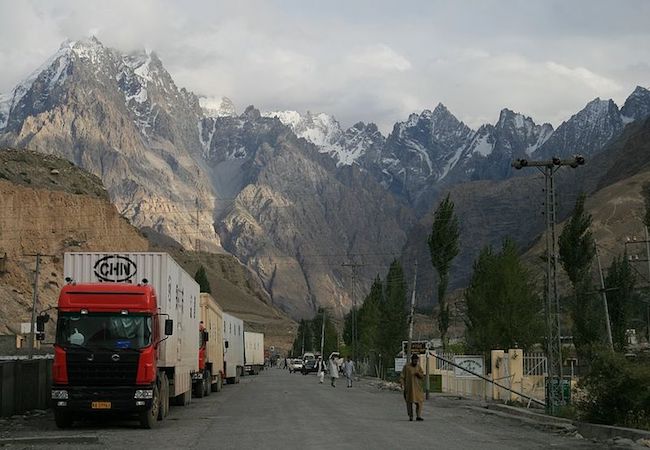
By Sadia Kazmi
Time and again it has been reiterated by the leadership of both the countries China and Pakistan that the projects under the CPEC are going to be completed within the stipulated time. However, every now and then some news surfaces challenging these claims. Sometimes it is the revision in the initial list of suggested projects or the shelving of some ongoing one. Nonetheless, before forming a firm opinion about the success or failure of this project, it is important to look at the real facts and figures and base one’s judgment only on the official and credible information available. Besides it is too early yet and premature to predict the fate based only on assumptions. No doubt that CPEC, ever since its initiation, has been embroiled in controversies. There have been continuous attempts by the outsiders to sabotage the progress on the CPEC especially through negative propaganda, raising doubts and ambiguities about this multi-billion-dollar project. Simultaneously there has been repeated commitment and reassurances from Chinese as well as Pakistani side to make it a success. So far, the data on the official sites shows that there has been a smooth and consistent progress on the project hence confirming the government claims. The timeline of CPEC project completion has been divided into different phases under the early harvest scheme, medium term and the long-term scheme. Minister for Planning, Development and Reforms Mr. Ahsan Iqbal mentioned in one of his press conferences, that the first phase of the project will be completed by 2017-2018, second by 2020 and the third by 2030.
The basic reason for dividing the whole project into phases is that it is basically a long term broad framework with multiple sectoral projects, which will be accomplished through bilateral agreements between both the sides over the period of time. It was reported in the month of May that both China and Pakistan have agreed to revise and update the list of CPEC energy cooperation projects, removing five pending projects with the combined capacity of 3470 megawatt. These include Muzaffargarh Coal Power project (1,320 MW), Salt Range Mine Mouth Power project (300 MW), Gaddani Power par (1,320 MW), Sunnec Wind Farm (50 MW), and Chichonki Malliyan Combined-cycle Power plant (525 MW). However, it has been affirmed that the removal of these five projects is mainly because of them being technically unfeasible. At the same time, it was reassured that with the removal of these energy projects the CPEC installed capacity agreed under the previous energy agreement will remain unchanged. In fact, new projects are planned to be added to the portfolio. Most of these new projects will be based on Hydroelectric generation. It was also decided that no change will be made in installed capacity of 17,045 MW and the allocated funds of $ 34 billion. In the same context, China and Pakistan both agreed in the last JCC meeting to include hydro power projects in the northern Indus region under the umbrella of the CPEC.
The question as to whether the CPEC projects is going to be completed within the given time frame, can be well answered by looking at the progress on different projects. The official site shows the following statistics: Saihwal Coal-fired Power plant is completed (1,320 MW), Dawood Wind farm is completed (50 MW), Quaid-i-Azam Solar park is 90 percent complete so is Jhmipir Wind farm, Port Qasim Coal-fired plant, Karot Hydro power project and Wind Farm Phase II are 70 percent complete, Suki Kinari Hydro power project is 65 percent complete, and Engro Thal Coal-fired power plant and Surfice Mine and Sachal Wind farm are 60 percent complete, Coal block Mine Mouth power plant and Hubco Coal Power plant are also 50 percent complete, and there are so many more that have already been initiated and are undergoing a steady progress.
Other than the energy projects, substantial progress has also been made on the infrastructural projects under CPEC. These include laying out of new routes for the facilitation of transit, trade and enhancement for market facility. In this regard, the upgradation of ML1 and Havelian dry port feasibility report has been completed and framework agreement has been signed. The construction work on Havelian-Thakot section of KKH Phase I is almost 70 percent complete, Karachi-Lahore Motorway i.e. Multan-Sukkur section is also 70 percent complete, Upgradation of ML1 i.e. Multan-Lahore section, Hyderabad-Multan section, and Kemari-Hyderabad section is 40 percent complete.
Similarly, a number of projects dedicated for Gwadar port city are also underway including China-Pakistan Faqeer primary school which is complete. Gwadar Free Zone is 60 percent complete, while Gwadar Eastway Express way and Gwadar New International Airport are 40 percent complete. Work on vocational college and Hospital is also underway.
Industrial and economic cooperation has also been given due consideration under the CPEC project where various regions of Pakistan have been engaged into industrial cooperation through resource mobility, economic integration and information connectivity. Work on Lahore Orange Line metro is 70 percent complete. Optical fiber cable from Rawalpindi to Khunjerab is 60 percent complete, while Gwadar-Nawabshah LNG terminal and pipeline is 40 percent complete.
All these facts and figures provide a clear picture about the progress on various projects under CPEC. Looking at the steady progress on the early harvest projects and firm commitment by the leadership of both countries, one can hope and believe that the CPEC is not only bound to be complete but will be completed in the selected time frame and will not only usher in a new era of socio-economic development in other parts of the provinces, but will also help promote tourism in Gilgit-Baltistan and bring prosperity in the region.




